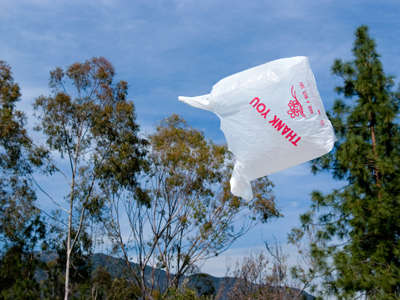One of the topics covered in high school Chemistry is polymerisation. Polymerisation is the reaction of monomer molecules to form long chain polymer molecules.
A monomer is a small reactive molecule that can be joined with other monomers to form long chains. These long chain molecules can be made up from tens of thousands of monomers joined together. When making a polymer, sometimes only one type of monomer is used, for example, if you use only ethene, you will end up with poly(ethene). In other cases, two monomers can be used. You may have seen or made nylon in your lessons - to make it you use two different polymers, adipic acid and 1,6-diamino hexane. A strand of nylon can be pulled out from between the two immiscible layers of chemical.
There are several other key words that you need to associate with polymers as well. Firstly there are two that describe the type of reaction used to make a polymer - addition polymerisation and condensation polymerisation. Addition polymerisation is the type of polymerisation reaction that occurs when you take the monomers and simply add them together. That is the case with polymers such as poly(ethene) and poly(propene). The monomers join via a carbon-carbon double bond. No other chemicals are used up or made. During condensation polymerisation, two different monomer types are used. When they react a small molecule is produced as well as the polymer. In some cases it is water, hence the name of this reaction, in other cases it is a different small molecule (with the example of nylon given in the first paragraph, the small molecule is hydrogen chloride, which is corrosive and the reason why it is often only a teacher demonstration).
The second pair of important keywords are thermosoftening and thermosetting. If you know that the prefix thermo- is something to do with heat, then understanding these terms should be easy. A thermosoftening plastic (examples are nylon and poly(ethene)) can be produced by the manufacturer in the form of granules which are easy to handle. These are shipped to other companies who can heat the granules and mold the liquid polymer into the shapes they want for items such as plastic carrier bags, ballpoint pen casings and plastic bottles. Thermosetting polymers on the other hand, can only be molded once. The manufacturer must mix the two monomers and then inject the mixture into a mold where heating causes it to polymerise. As well as the monomers joining to form long chains, the chains themselves are also linked together. Further heating does not soften thermosetting polymers, they either survive the heat or are destroyed. Thermosetting polymers are used for making tires (vulcanized rubber), mattresses (polyurethane foam) and worktops (melamine) plus many others.
Polymers are incredibly important substances, but they create problems for the environment as they are not usually biodegradeable - they don't break down naturally so it is quite possible that they will remain in the environment for hundreds of years. They are also normally low density and therefore easily spread by wind and water. Sometimes we use polymers to do a job because of its properties, but other times we design polymers with special properties so that they can do a particular job. New polymers are being produced all the time with a particular current drive on overcoming the environmental issues, for example the polymer known as polylactide is based on corn starch or sugarcane. This is biodegradeable and one of the polymers used for 3D printing.








